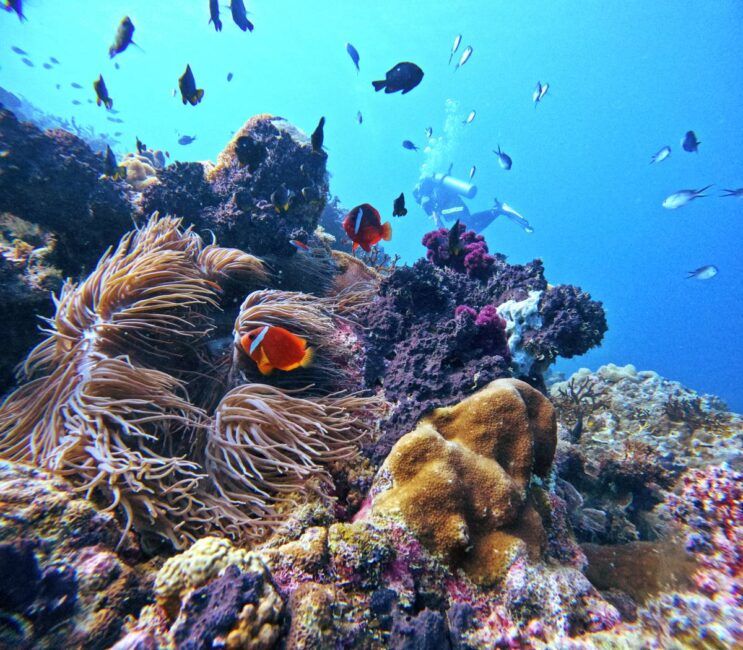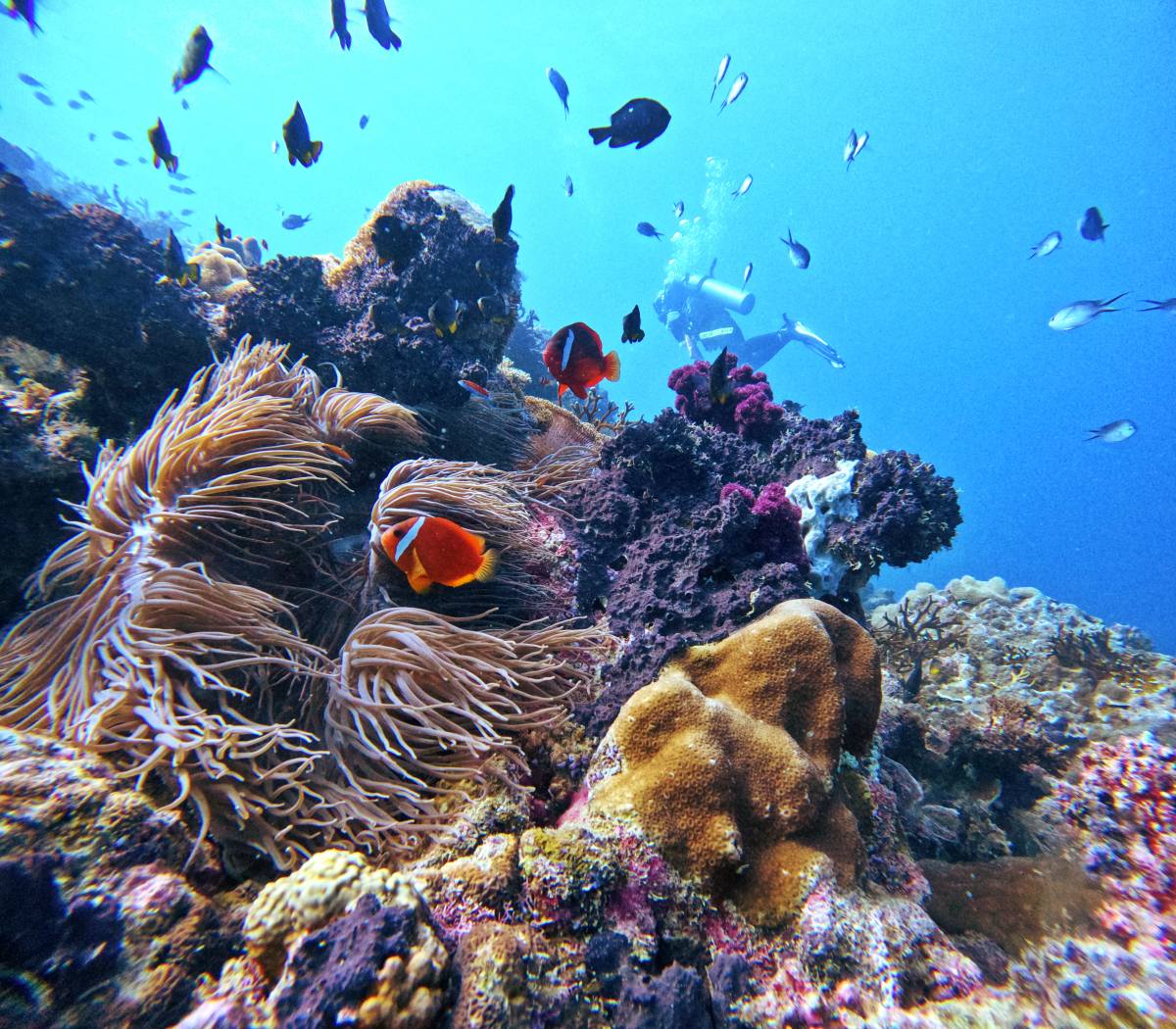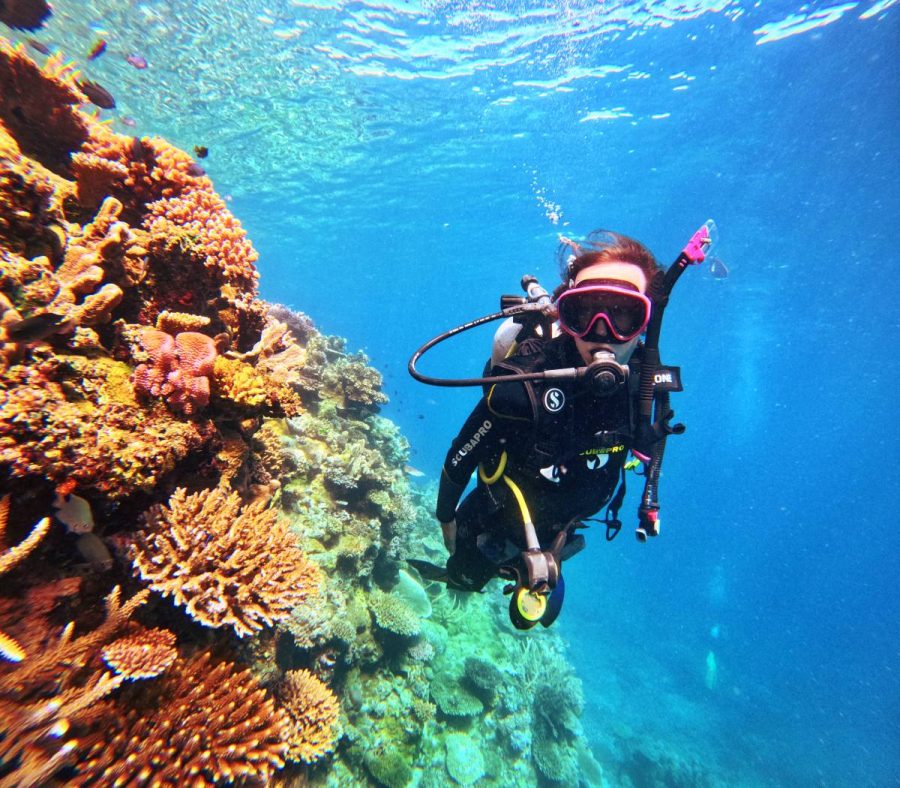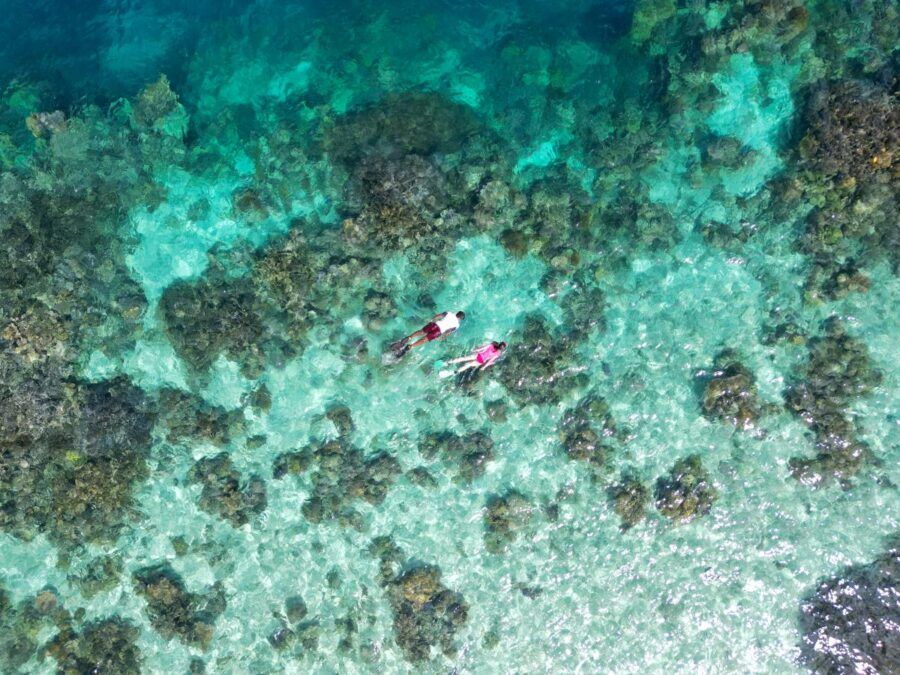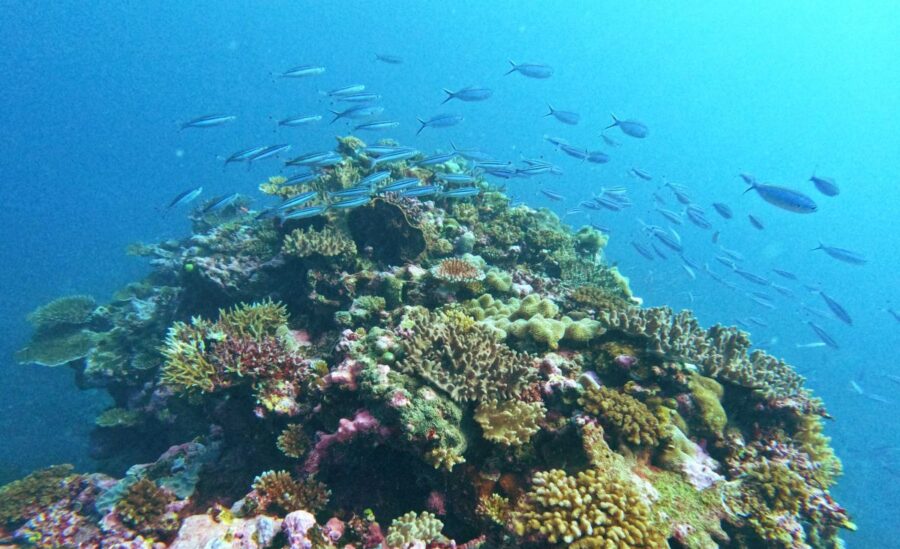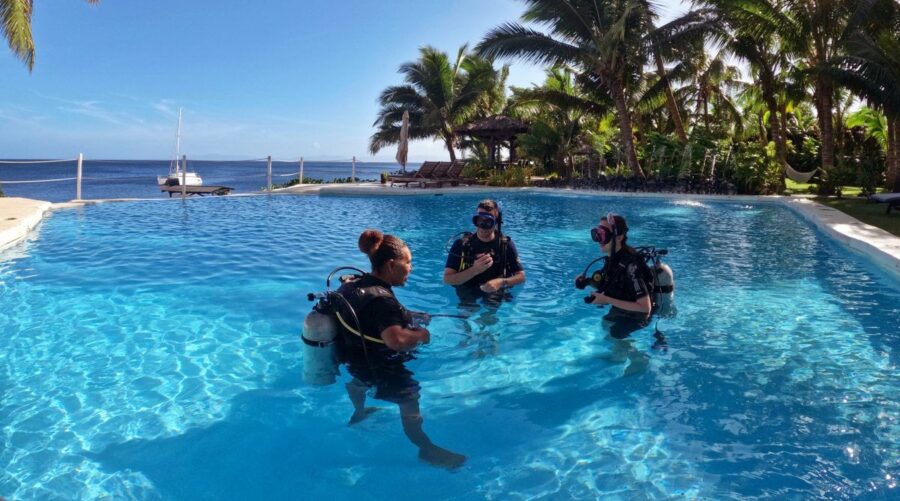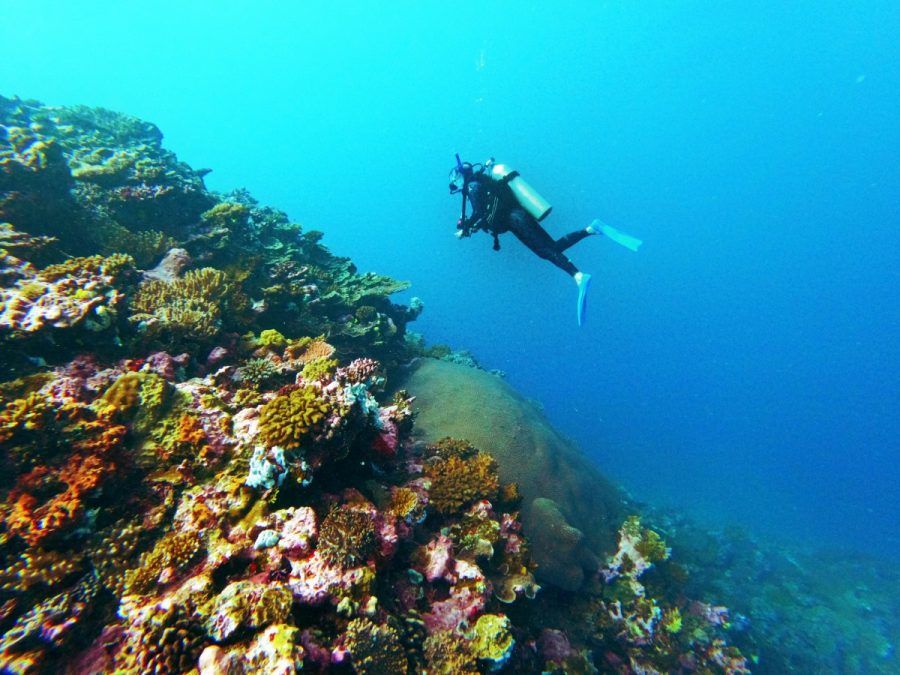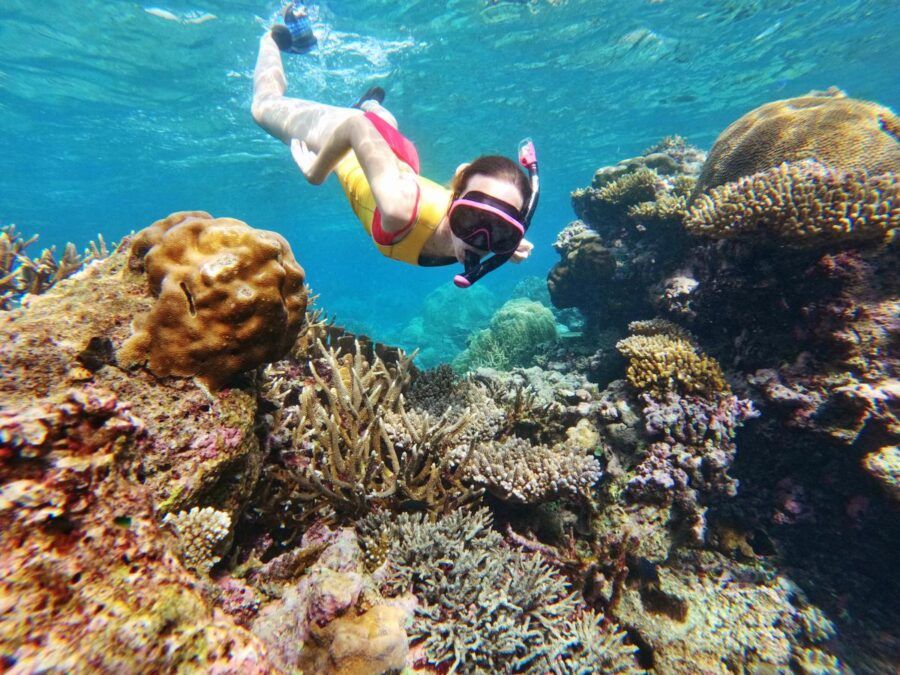Top Scuba Diving Destinations in Fiji
If there’s only one thing you have heard about Fiji, it’s probably how amazing the scuba diving is here. Nicknamed the “Soft Coral Capital”, Fiji offers a superb array of dive sites that are easily accessible with short boat trips. Conditions for scuba diving are generally amazing all year round, but the best months tend to be October and November.
With plenty of dive operations across the islands, many of which have bases in resorts, there’s no excuse not to get out there are explore the mind-blowing underwater world of Fiji!
Table of Contents
Rainbow Reef
Wedged between Vanua Levu and Taveuni and fed by the nutrient-rich currents of the Somosomo Strait, the Rainbow Reef is a top dive destination in Fiji. Explore the vivid tapestry of soft coral and sea fans at popular dive sites like the White Wall and Purple Wall, awash with tree-like coral and overhangs harbouring soldierfish and squirrelfish.
Rainbow Passage is another must-hit spot with pinnacles of coral home to various nudibranchs, Christmas tree worms and clownfish. The Rainbow Reef is accessible from resorts on eastern Vanua Levu, as well as resorts on Taveuni.
It’s important to note that Rainbow Reef is very current-dependent, so resorts will only take you to sites depending on the best conditions.
Dive Sites at the Rainbow Reef
- Dakorivonu Pass – Depth: 15-24 m (50-80 ft)
- The Zoo – Depth: 18-30 m (60-100 ft)
- The Fingers – Depth: 15-28 m (50-90 ft)
- Great White Wall – Depth: 15-21 m (50-70 ft)
- Annie’s Bommie – Depth: 16-30 m (50-100 ft)
- Small White Wall – Depth: 18-25 m (60-85 ft)
- The Corner – Depth: 18-25 m (60-85 ft)
- Pot Luck – Depth: 18-25 m (60-85 ft)
- Jack’s Place – Depth: 15-25 m (50-85 ft)
- Fish Factory – Depth: 10-25 m (33-85 ft)
- The Ledge – Depth: 10-18 m (33-60 ft)
- Moud Reef – Depth: 15-25 m (50-85 ft)
- Sam’s Point – Depth: 12-18 m (40-60 ft)
- Blue Ribbon Reef – Depth: 12-18 m (40-60 ft)
- Rainbow’s End – Depth: 12-18 m (40-60 ft)
- Barracuda Hole – Depth: 10-18 m (33-60 ft)
- Yellow Tunnel – Depth: 8-28 m (26-93 ft)
- Cabbage Patch – Depth: 10-18 m (33-60 ft)
- Storm Warning – Depth: 10-18 m (33-60 ft)
- Monoculo Reef – Depth: 10-18 m (33-60 ft)
Location: Accessible from eastern Vanua Levu and Taveuni. See how to get there in the Taveuni Transport Guide.
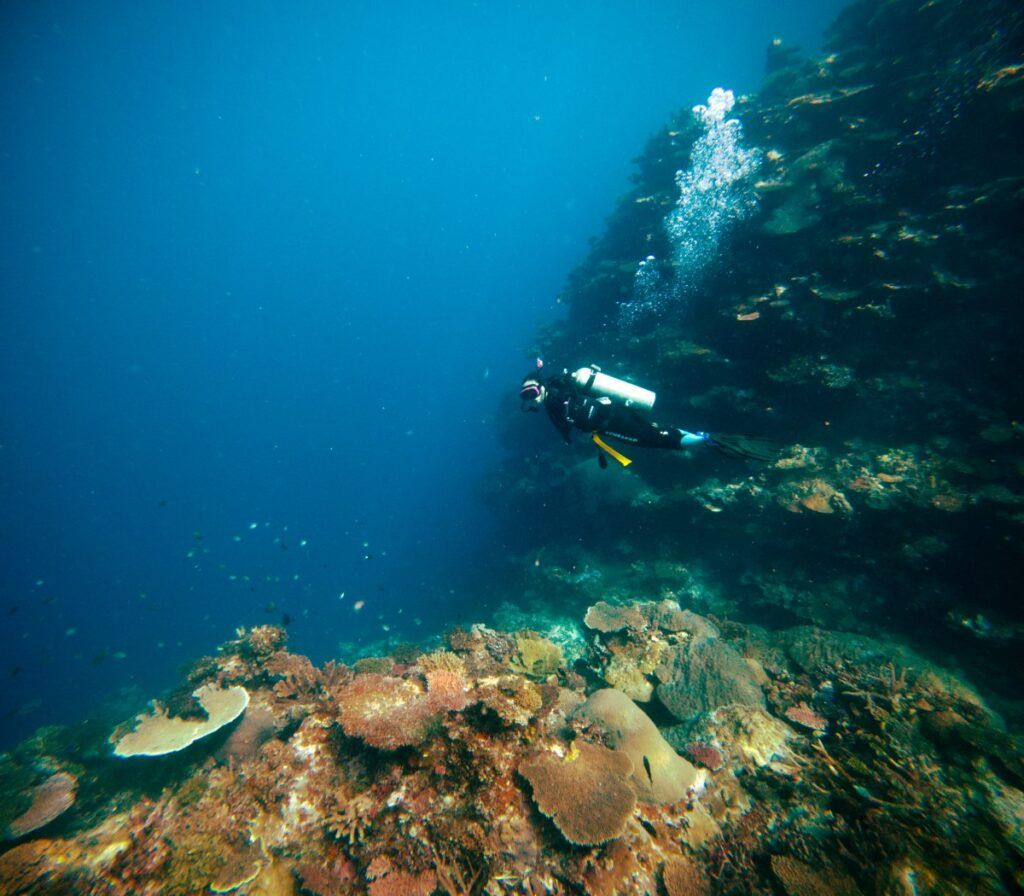 © FijiPocketGuide.com
© FijiPocketGuide.com
Great Astrolabe Reef
Serious divers should definitely consider staying in Kadavu to dive into the world’s fourth-largest barrier reef. The Great Astrolabe Reef curls around the bottom of the island group some 100 km (62 mi). Needless to say, there are lots on offer for divers here.
On the western side of the reef, dive sites like Split Rock, Broken Stone and Vouwa offer a series of fun underwater formations, such as twisting canyons and arches – this list only scratches the surface, so check out the 10 Best Dive & Snorkel Sites on the Great Astrolabe Reef. Dives can be organised from most Kadavu resorts.
Dive Sites at the Great Astrolabe Reef
- Broken Stone – Depth: 10-18 m (33-59 ft)
- Fan Dreamland – Depth: 20 m (66 ft)
- Manta Reef – Depth: 14-45 m (46-148 ft)
- Small Corner 1 & 2 – Depth: 15-20 m (49-66 ft)
- Eagle Rock – Depth: 5-35 m (16-115 ft)
- Te’s Reef – Depth: 18-20 m (59-66 ft)
Location: Kadavu. See the Kadavu Transport Guide to learn how to get there.
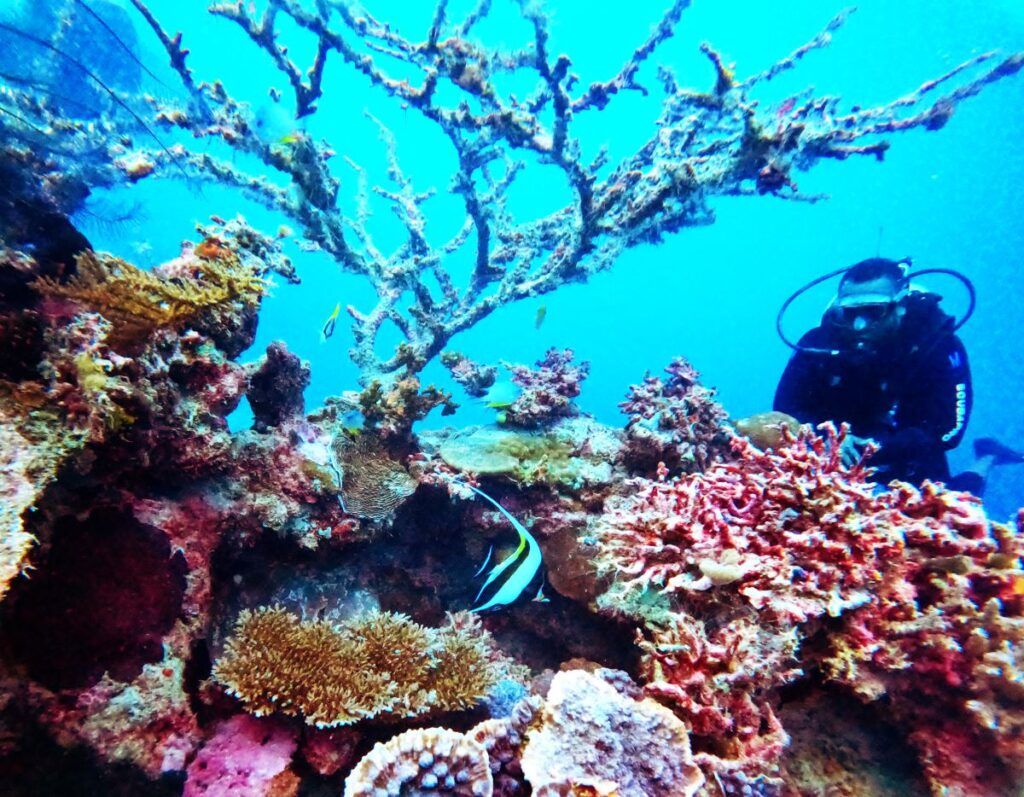 © FijiPocketGuide.com
© FijiPocketGuide.com
Beqa Lagoon
One of the best places for scuba diving off Fiji’s main island, Viti Levu, the Beqa Lagoon is lined with one of the world’s largest barrier reefs with 305 km (190 mi) of coral.
Accessed via dive operators and resorts on the Pacific Harbour and Beqa Island, the Beqa Lagoon is not only home to an array of amazing coral displays but is one of the top destinations for shark diving.
All Pacific Harbour-based dive shops offer dives in the aptly-named Shark Reef for an up-close-and-personal experience with bull sharks – see The Best Places to See Sharks in Fiji + 10 Best Tours for more details.
Dive Sites at the Beqa Lagoon
- The Bistro – Depth: 18 m (60 ft)
- Ceasars Rock – Depth: 5–30 m (15–100 ft)
- ET/Cyclops – Depth: 18 m (60 ft)
- Tasu II Wreck – Depth: 18–26 m (60–85 ft)
- Joe’s Best – Depth: 27 m (90 ft)
- Pearl Rock – Depth: 18 m (60 ft)
- Glory Hole – Depth: 20 m (65 ft)
- Carpet Cove – Depth: 30 m (100 ft)
- Seven Sisters – Depth: 21 m (70 ft)
- Million Dollar Point – Depth: 17 m (55 ft)
Location: Beqa Lagoon, accessible from Beqa Island and Pacific Harbour. See our Pacific Harbour Transport Guide for details.
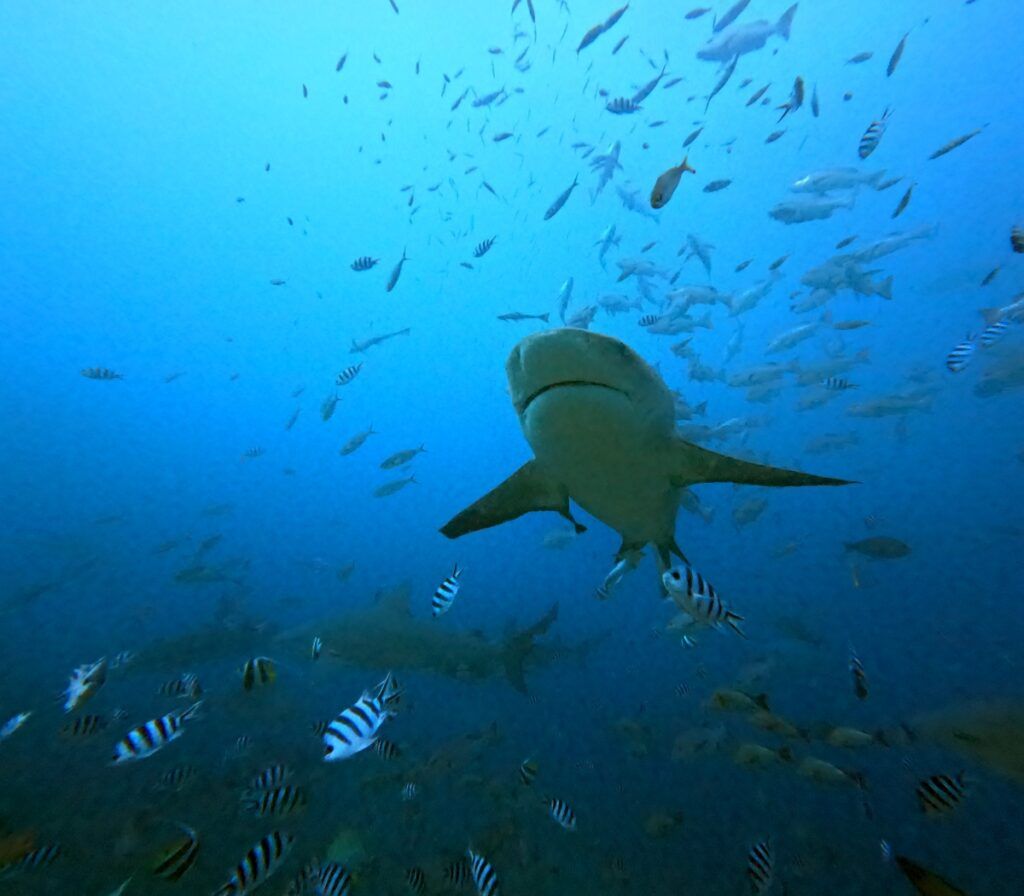 © FijiPocketGuide.com
© FijiPocketGuide.com
Namena Marine Reserve
A protected area from fishing, the Namena Marine Reserve is thriving with coral and other interesting marine creatures. Check out dive sites like Chimneys, which is less than 25 m deep. You’ll see several coral pillars reaching up to the surface where numerous fish species hide.
North-Save-a-Tack is another recommended dive site, which is a current-swept passage with a dizzying amount of fish and coral. These dives are best accessed with the resorts in Savusavu and Vanua Levu.
Dive Sites at the Namena Marine Reserve
- Chimneys – Depth: 3–22.5 m (10–75 ft)
- Grand Central Station – Depth: 25 m (82 ft)
- Blue Ribbon Eel Reef – Depth: 25 m (82 ft)
- Magic Mound – Depth: 5–24 m (16–80 ft)
- North Save-A-Tack – Depth: 21 m (70 ft)
Location: Savusavu, Vanua Levu. See how to get there with the Vanua Levu & Savusavu Transport Guide.
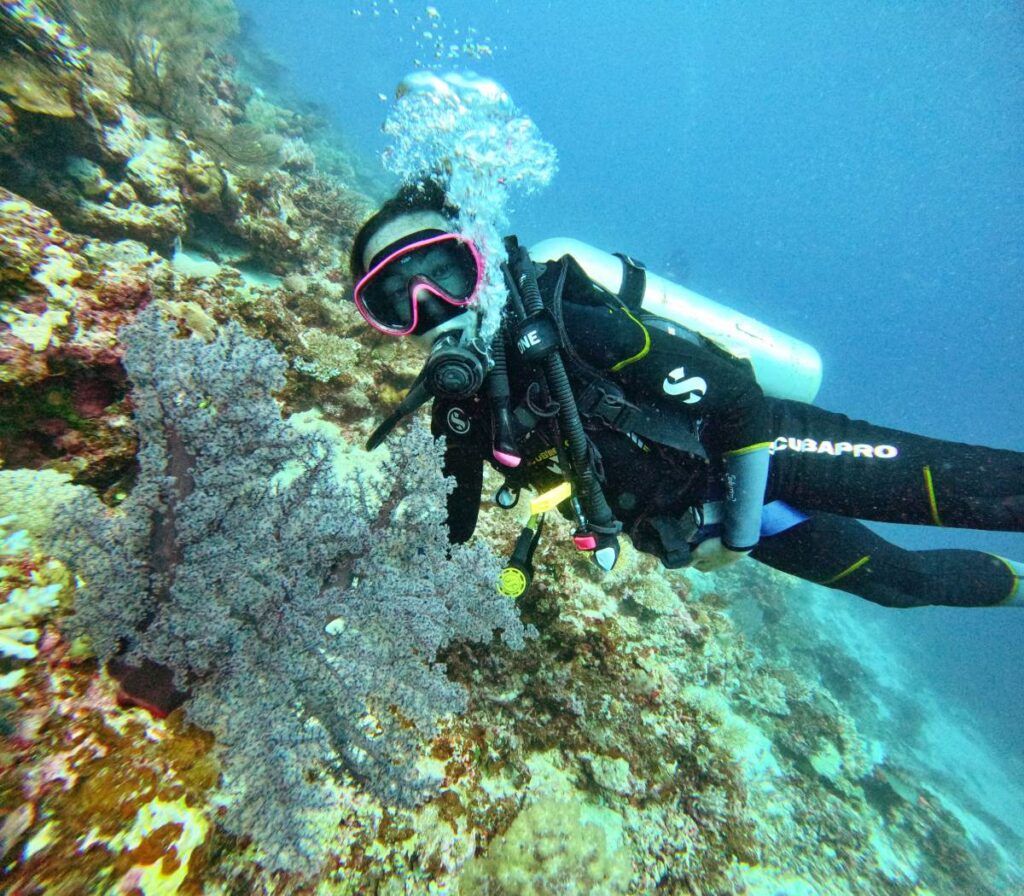 © FijiPocketGuide.com
© FijiPocketGuide.com
Bligh Water
The body of water between Viti Levu and Vanua Levu is known as the Bligh Water. Here, you’ll find a number of amazing and challenging dives for experienced divers. Check out E6, a seamount rising from 1,000 m to the surface attracting all sorts of pelagic fish, rays and hammerhead sharks.
There’s also a swim-through at the seamount called Cathedral which looks amazing with beams of light breaking through the ceiling. Some of the dive sites of the Bligh Water are accessible with dive operators and resorts on the Suncoast, as well as liveaboards.
Check out the 10 Best Dive Sites on the Suncoast for more amazing dive sites.
Dive Sites at the Bligh Water
- E-6 Pinnacle – Depth: 20–30 m (66–100 ft)
- Nai’a Flaya – Depth: 20–30 m (66–100 ft)
- Cat’s Meow – Depth: 20–30 m (66–100 ft)
- Instant Replay – Depth: 18–30 m (60–100 ft)
- Purple Haze – Depth: 15–25 m (50–82 ft)
Location: Accessible from the Suncoast, northern coast of Viti Levu. See the Suncoast Transport Guide for details.
 © FijiPocketGuide.com
© FijiPocketGuide.com
Malolo Barrier Reef
Due to its proximity to bustling tourist hubs, like Nadi, Denarau and the Mamanuca Islands, the Malolo Barrier Reef is one of the most popular places to scuba dive in Fiji. Divers are treated to good visibility, diverse marine life and easy sites for beginner and novice divers.
The Supermarket is a popular option for its frequent shark encounters, while Gotham City has all the coral heads and tropical reef fish you could dream of.
Many dives on the Malolo Barrier Reef can be accessed with the resorts on the Mamanuca Islands, as well as dive operators in Nadi and Denarau.
Dive Sites at the Malolo Barrier Reef
- Plantation Pinnacle – Depth: 20–30 m (66–100 ft)
- Three Bommies – Depth: 20–30 m (66–100 ft)
- Supermarket – Depth: 30 m (100 ft)
Location: Accessible from Nadi/Denarau, on the western side of Viti Levu; and the Mamanuca Islands. See the Mamanuca Transport Guide for details.
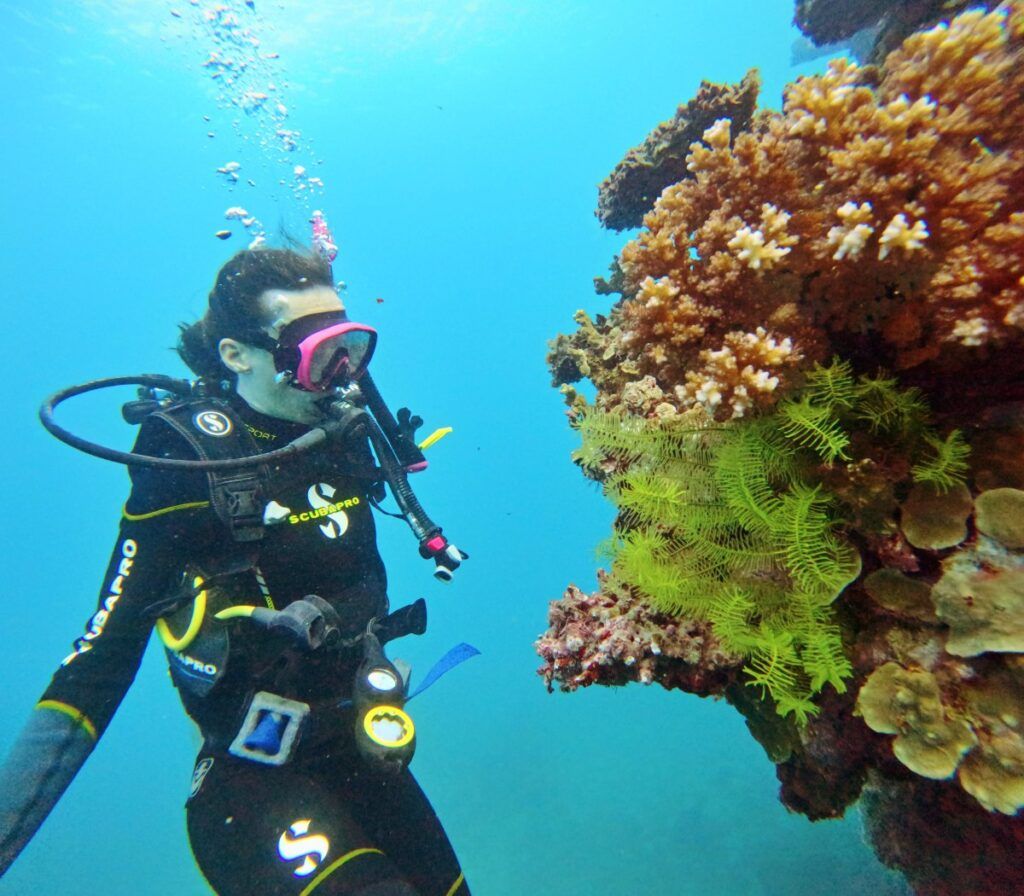 © FijiPocketGuide.com
© FijiPocketGuide.com
Vawa Island
In the Yasawa Islands, dive sites provide clear waters, an uncrowded experience and stunning underwater seascapes. A great diving option in the Yasawas is Lekima’s Ledge off Vawa Island where novice divers can explore an amazing underwater cliff.
Check out some of the resorts in the Yasawa Islands offering scuba diving.
Dive Sites at the Vawa Island
- Unnamed Fringing Reef Site – Depth: 20–30 m (66–100 ft) (depths estimated based on neighbouring sites)
Location: Northern Yasawa Islands. Check out the Yasawa Transport Guide to see how to get there.
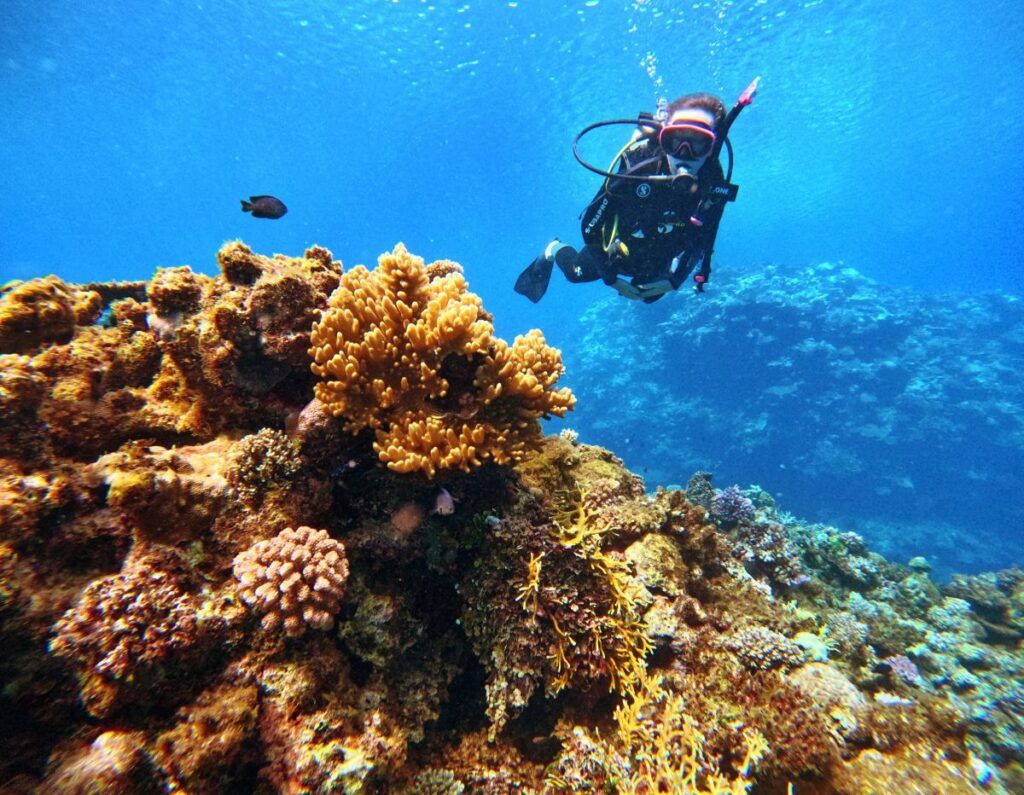 © FijiPocketGuide.com
© FijiPocketGuide.com
Moyia Reef
Another one in the Yasawa Islands, Moyia Reef offers a chance to be metres away from 2-3m sharks, including bull sharks, tiger sharks, tawny nurse sharks, lemon sharks and silver-tip sharks. Kuata Island‘s resident resort, Barefoot Kuata Resort, offers trips to the reef for shark diving and snorkelling.
Again, check out The Best Places to See Sharks in Fiji + 10 Best Tours to learn more.
Dive Sites at the Moyia Reef
- Unnamed Coral Ridge Site – Depth: 20–30 m (66–100 ft) (assumed reef depth range)
Location: Southern Yasawa Islands. Day trips from Nadi/Denarau area are available with South Sea Cruises. Otherwise, check out the Yasawa Transport Guide to see how to get there.
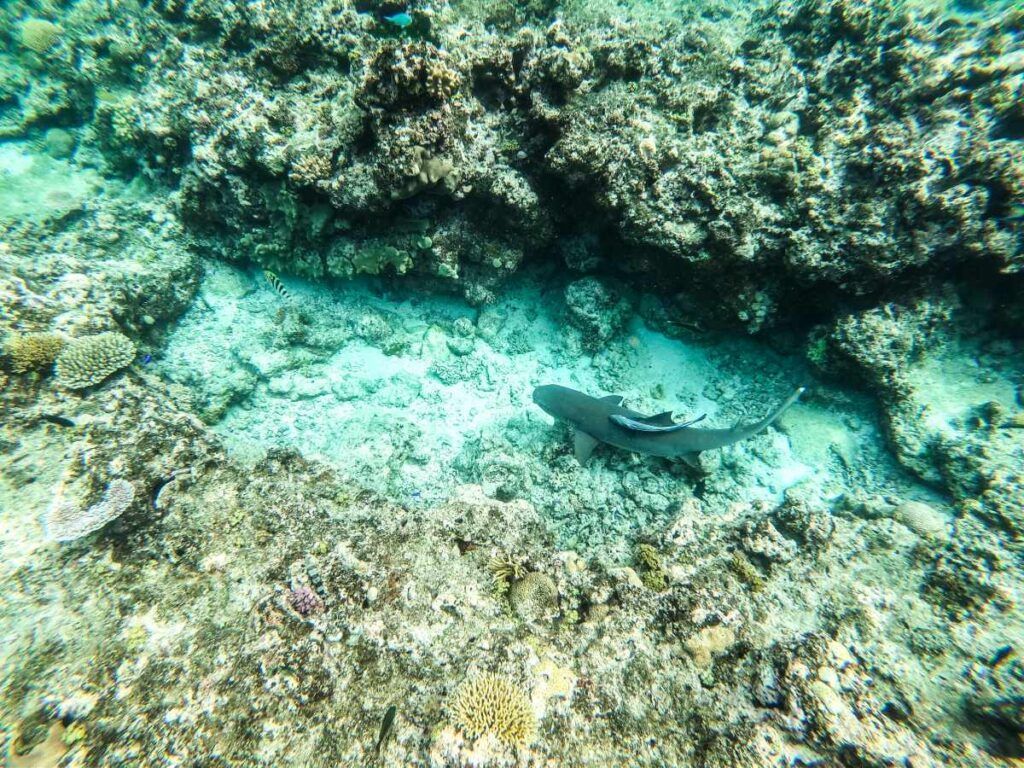 © FijiPocketGuide.com
© FijiPocketGuide.com
Kadavu Lailai
Experience an unforgettable day trip with Captain Cook Cruises to Kadavu Lailai, their private beach on Serenity Island. Board their tall ship with a welcome drink and kava ceremony before a short sail to your adventure island. Explore the vibrant coral reef by snorkelling, kayaking, or paddleboarding.
Join a marine biologist on a glass-bottom boat tour, take a cultural nature walk, and contribute to conservation efforts through the ‘Buy a Coral, Build a Reef’ program. PADI 5 Star Scuba Diving is also available for experienced divers. Enjoy morning and afternoon tea, a buffet lunch, and drinks on the island.
For more exploration, take an optional side trip to nearby Treasure Sand Bar for additional snorkelling and coral viewing.
Dive Sites at the Kadavu Lailai
- Naiqoro Passage – Depth: up to 30 m (100 ft)
- Black Rock – Depth: 20–36 m (66–120 ft)
- The Archway – Depth: 12–25 m (40–82 ft)
Location: Tours depart from Port Denarau, Denarau Island, Nadi, northwestern side of Viti Levu. Transfers from the Nadi/Denarau area are included and Coral Coast at an additional fee.
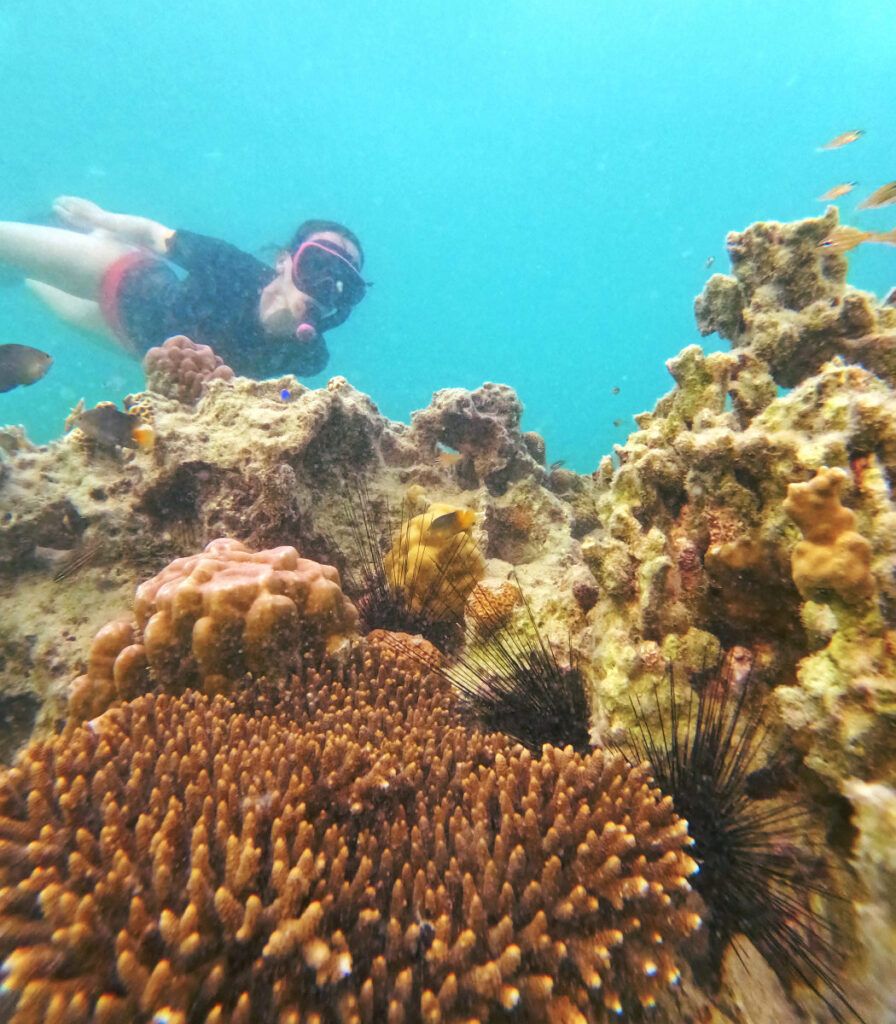 © FijiPocketGuide.com
© FijiPocketGuide.com
Lomaiviti Islands
Finally, the Lomaiviti Islands off the coast of Suva present their own array of dive sites to enjoy.
Stay at one of the resorts in the Lomaiviti Islands and you’ll have access to sites such as Shark Reef – home to white-tip sharks, Stairway to Heaven with three gigantic coral heads to swim through, and Bird Island Reef for advanced divers offering amazing stretches of coral attracting sharks, rays, tuna, giant clams and more.
Dive Sites at the Lomaiviti Islands
- Wakaya Wall – Depth: 10–30 m (33–100 ft)
- Gau Wall – Depth: up to 30 m (100 ft)
Location: Lomaiviti Islands. See our Lomaiviti & Levuka Transport Guide to learn how to get there.
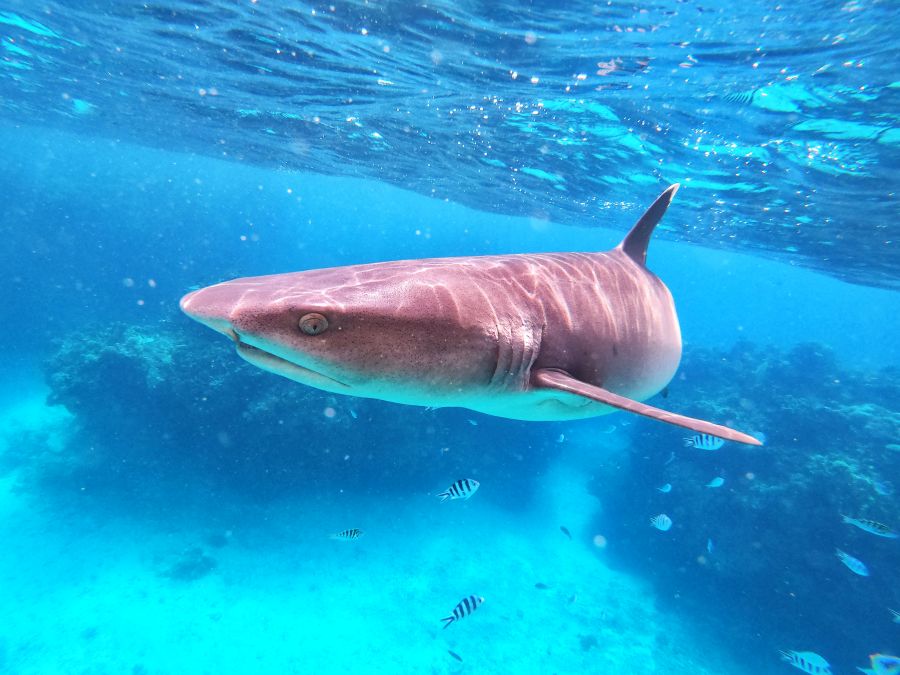 © FijiPocketGuide.com
© FijiPocketGuide.comMore About Places to Scuba Dive in Fiji
That’s it for our guide to places to scuba dive in Fiji; for more information about diving and water activities, check out the following articles:
- Learn to Scuba Dive in Fiji: Where to Get Your Diving Certification
- The Best Time to Dive in Fiji
- 20 Best Places to Snorkel in Fiji
Finally, if there’s anything we’ve missed, you’re likely to find it in The Guide to Scuba Diving in Fiji.
Sources:
The information in this guide has been compiled from our extensive research, travel and experiences across Fiji and the South Pacific, accumulated over more than a decade of numerous visits to each destination. Additional sources for this guide include the following:
- Tourism Fiji (General travel advice - Updated [2025])
- Fiji Hotel and Tourism Association (Tourism trade association - Updated [2025])
- SPTO (Pacific tourism advice - Updated [2025])
- Ministry of Tourism and Civil Aviation (Tourism statistics - Updated [2025])
- Land Transport Authority (Road safety advice - Updated [2025])
- Fiji Immigration (Visa and immigration advice - Updated [2025])
- Fiji Revenue & Customs Service (Customs and visitor taxes - Updated [2025])
- Biosecurity Authority of Fiji (Biosecurity advice - Updated [2025])
- Fiji Meteorological Service (Weather forecast and warnings - Updated [2025])
- Fiji Bureau of Statistics (Statistics and travel data - Updated [2025])
- Safe Travel (New Zealand travel advisory for Fiji - Updated [2025])
- Smart Traveller (Australia travel advisory for Fiji - Updated [2025])
- Travel.State.Gov (U.S. travel advisory for Fiji - Updated [2025])
Our editorial standards: At Fiji Pocket Guide, we uphold strict editorial standards to ensure accurate and quality content.

About The Author
Laura (Lora) S.
This article was reviewed and published by Laura, editor in chief and co-founder of Fiji Pocket Guide. Since arriving solo in the South Pacific over 10 years ago with nothing but a backpack and a background in journalism, her mission has been to show the world how easy (and awesome) it is to explore a paradise such as Fiji. She knows the islands inside-out and loves sharing tips on how best to experience Fiji’s must-dos and hidden gems. Laura is also editor of several other South Pacific travel guides.
